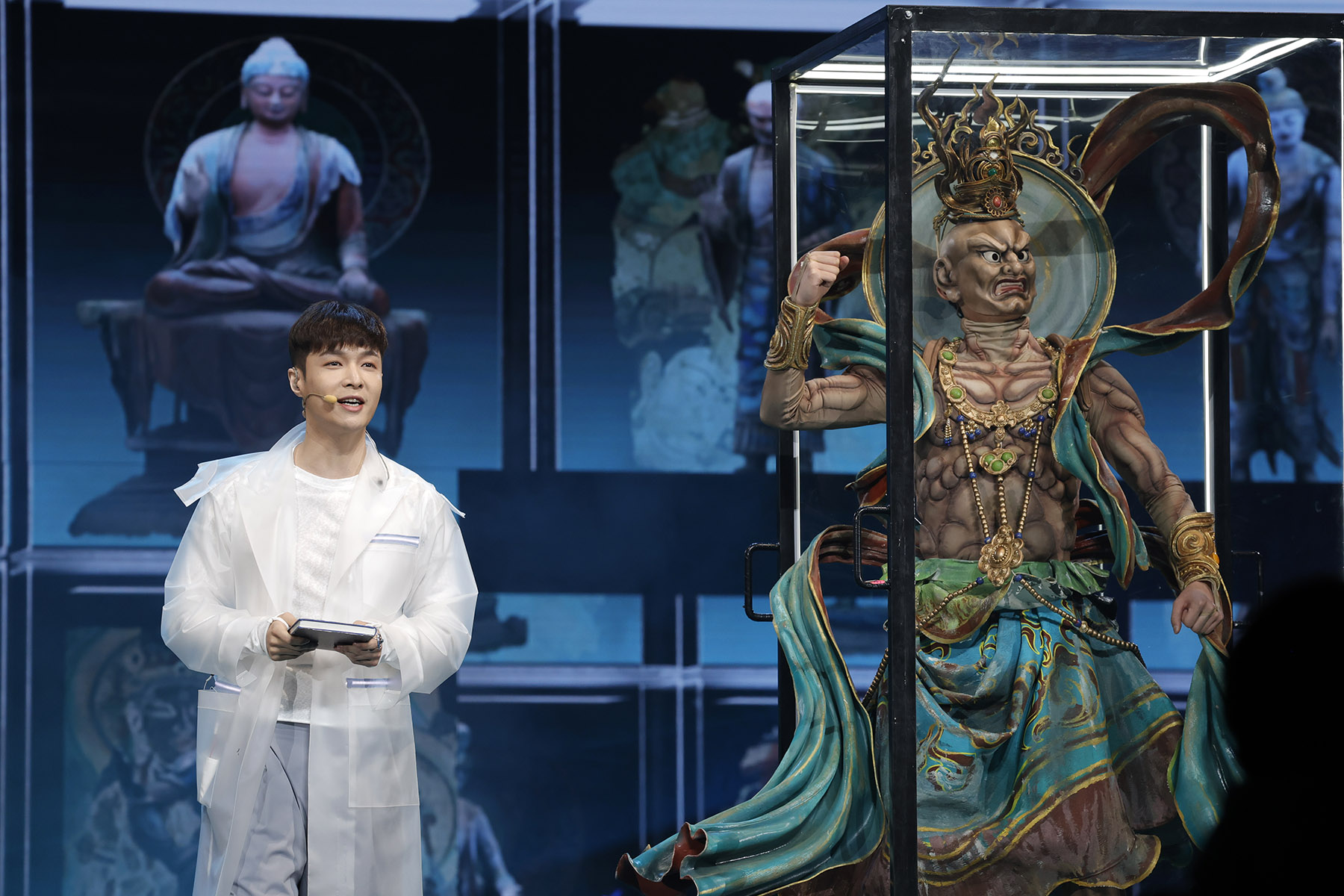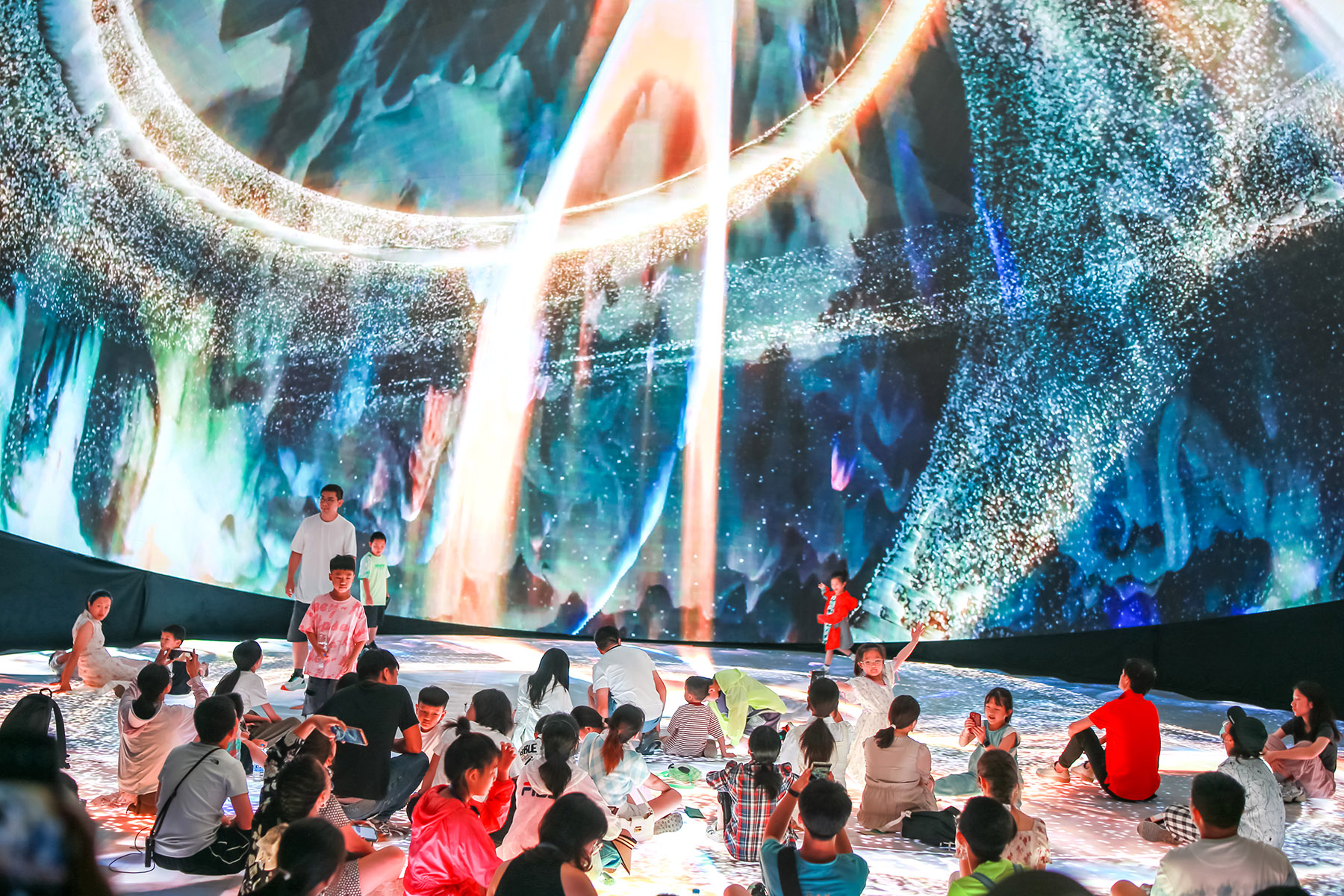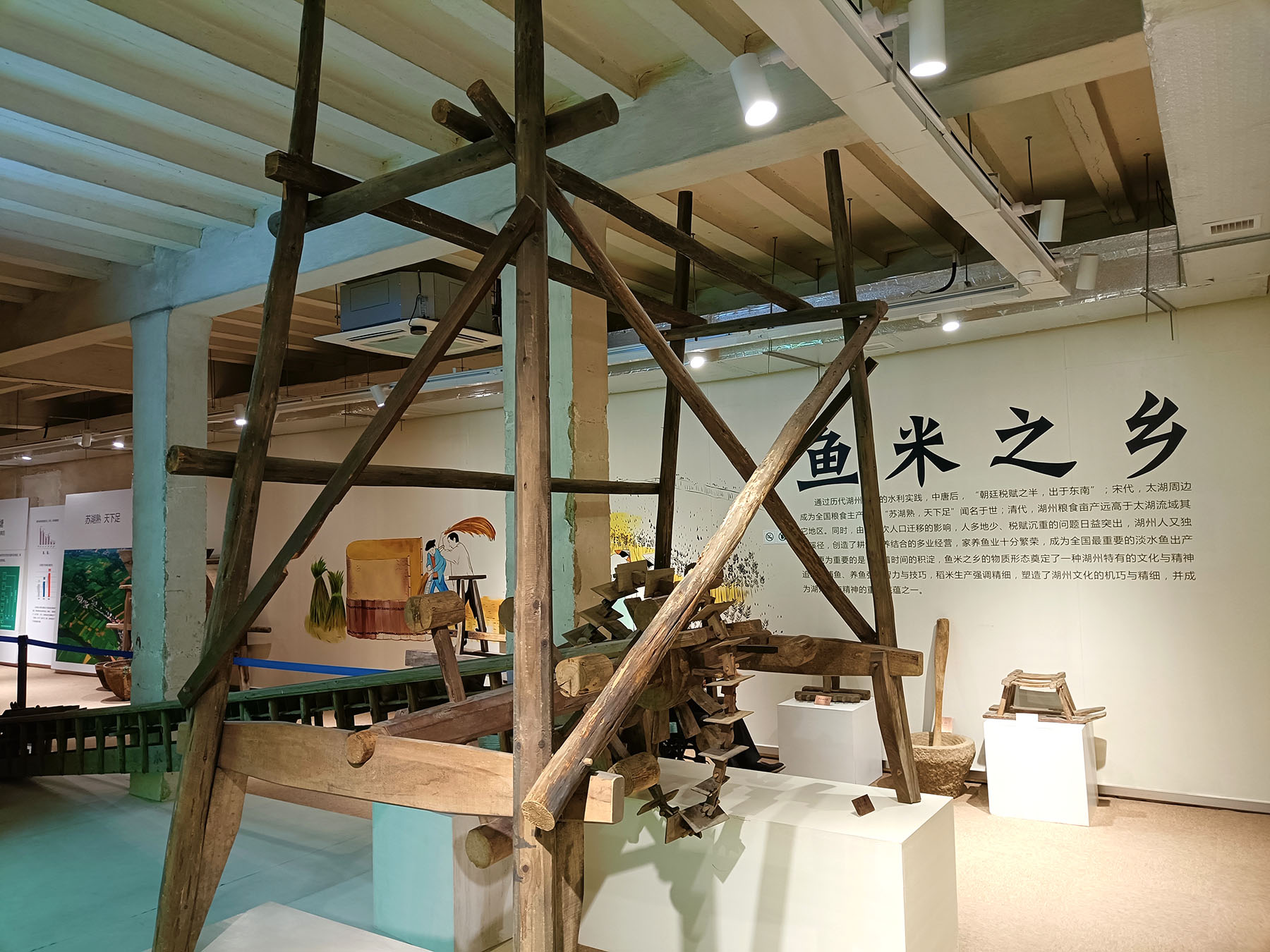As technology reshapes relic preservation, rural folks emerge as essential partners in sustaining cultural identity, Yang Feiyue reports in Changsha.

From digitized Buddhist caves to neutron-scanned relics, innovators are merging tradition and cutting-edge science to revive ancient treasures.
A towering projection of a 1,600-year-old Buddha from the Mogao Caves — a Silk Road treasure trove of Buddhist art — fills the screen as Tian Qinxin taps her tablet.
The audience gasps as the fresco's fading pigments are restored to their original brilliance from the scenes of The Summoning of Dunhuang that were presented by Tian, president of the National Theatre of China. The images on the screen created a vivid, time-traveling connection between the Dunhuang Academy's digital research center in 2035 and a painter from 1935, vividly bringing the past to life at the 2025 Cultural and Natural Heritage Day's theme forum in mid-June that showcased the powerful fusion of culture, history and technology.
The annual day celebration has served as a vital platform to highlight the achievements in the protection and utilization of cultural relics and the preservation and inheritance of cultural heritage in China.
READ MORE: The art of taking China to the world
"The entire performance uses singing as the narrative medium, with dramatic acting and dance driving the plot. It brings the static images of Dunhuang to life through the actors' performances and digital technology, effectively reviving the cultural relics," Tian explains.
The debut of The Summoning of Dunhuang in December 2024 was a huge success, drawing 9 billion views across the internet and climbing to the trending lists of platforms such as Weibo, Douyin, Xiaohongshu, and Kuaishou more than 300 times.
Tian emphasizes that the production didn't just strike a chord in China but resonated strongly with overseas Chinese communities, reaching an audience of over 100 million globally.
She believes the show perfectly demonstrates how art can breathe contemporary life into the cultural relics.
"It allows us to continually recognize the essence of our nation," Tian says.
She points out that art, as "the horn of the times", reflects and leads the cultural trends of an era. Through its integration with cultural relics, it breathes new life and vitality into these ancient treasures and allows modern people to reconnect with and pass on these cultural treasures.
Tian was among dozens of experts and officials at the forum that explored a range of key topics in cultural relic protection and utilization. The discussions offered perspectives for bridging cultural heritage with the public and advancing its protection as a shared responsibility.
While art breathes emotion into relics, science provides the tools to decode and preserve them. Bridging the gap between ancient craftsmanship and modern innovation, Wei Cunfeng, a researcher at the Institute of High Energy Physics, Chinese Academy of Sciences, shares how nuclear technologies are revolutionizing the study and protection of cultural artifacts.

Large scientific devices such as synchrotron radiation sources and neutron scattering facilities, along with techniques like X-ray testing and X-ray CT scanning, have enabled comprehensive research on the materials, structure, and craftsmanship of cultural relics, which helps better understand the degradation of cultural relic materials, assess the effectiveness of preservation materials through environmental simulation, he says.
"By combining historical information — such as the history of pigments or architecture — we can analyze the elemental composition and crystal structure of relics, which enables us to deduce their creation dates and restoration history. This helps us in establishing chronological studies of relics and understanding their internal structure and material distribution, shedding light on their craftsmanship," he explains.
In collaboration with the Palace Museum, Wei's team applied neutron technology to research a Western Han Dynasty (206 BC-AD 24) iron scribe's knife in a lacquer sheath for writing on bamboo or wooden slips, which exposed the composite structure of the cutting edge, along with detailed craftsmanship like the molding and wrapping of cracks.
Wei notes that many innovations are driven by preservation needs.
For instance, his team developed a mobile electron beam irradiation device, part of a national R&D program led by the Dunhuang Academy, to protect tomb murals.
This device allows full-spectrum, uniform irradiation in confined tomb spaces, effectively sterilizing and disinfecting while maintaining ozone balance in the environment, he explains.
Wei emphasizes the need for ongoing collaboration with the cultural relics community to create a national nuclear analysis platform, furthering China's technological capacity in cultural preservation.
Beyond labs and grand performances, cultural heritage finds new life at the grassroots level.
In Zhejiang province, rural communities have become powerful stewards of history, with village museums anchoring local identity and driving regional development, says Lou Ting, director of the Huzhou Municipal Bureau of Culture, Radio, TV, and Tourism.
Under the 2021 initiative by the National Cultural Heritage Administration to develop Chinese village museums, Zhejiang has constructed more than 900 such museums.
Huzhou, designated a national pilot city, has since developed themed museums aligned with local heritage, including sericulture and tea, Lou says.
"We actively engage villagers, local scholars and private collectors, encouraging them to take ownership of rural cultural heritage. Old objects and traditional crafts, once scattered across fields or forgotten in farmhouse corners, are now carefully collected, curated and exhibited — making rural memory tangible and nostalgia perceptible," she says.

For example, Yigao village, recognized for its world-class irrigation heritage, established a museum that not only showcases ancient water management tools and historical hydrological chronicles but also employs immersive sound, light, and multimedia to bring to life the millennia-old wisdom of water conservancy.
"It has become a vital window for interpreting the cultural code of water towns south of the lower reaches of the Yangtze River," Lou says.
To date, the city has 122 rural museums — averaging one for every eight villages, she says.
Many of those museums have produced positive results. At the Digang ancient village, the mulberry-fishpond museum draws over 1 million visitors annually for its display of the wisdom hidden in local ecological farming that has sustained itself for 1,000 years, which boosts tourism business for local villagers, Lou observes.
More efforts will focus on integrating local characteristics with contemporary design in planning, accelerating the development of archaeological parks and rural cultural heritage parks, exploring more sustainable and dynamic operational models, and deepening the integration of cultural heritage with related industries, she says.
Lou believes those museums are "a showcase for local culture and a repository of historical memory".
Meanwhile, Hunan province is taking strides in revitalizing its cultural heritage through both tradition and technology.
Jiang Meng, director of the Hunan provincial cultural heritage bureau, says that efforts have been made to improve the construction, management, and accessibility of museums and memorial sites across the province.
In 2024, 11 new museums were registered, bringing the total to 200.These museums collectively house more than 1.5 million artifacts. Throughout the year, they launched more than 930 exhibitions and hosted over 20,000 educational events in both digital and physical formats, attracting more than 77 million visitors, he says.
So far, the province has identified and registered over 20,000 immovable cultural relics, including ancient sites, traditional architecture and historical landmarks.
Revolutionary cultural legacies have shown a strong appeal to the public through technology-enabled exhibitions and themed educational initiatives.
ALSO READ: Preserving ancient books for present and future
The digital project Art of Life: Multimedia Exhibition of Mawangdui Han Culture, jointly developed by the Hunan Museum, the National Digital Library of China, and Harvard University's Chinese Arts Media Lab, welcomed over 500,000 visitors from June last year to May, according to Jiang.
The province will work to establish a complete provincial catalog of cultural heritage resources, with a focus on identifying, evaluating, and managing all categories of cultural relics — especially revolutionary sites, bamboo-slip manuscripts, and county-level and general immovable relics, Jiang says.
Local authorities will keep upgrading management of museums through a province-city collaborative model, encouraging differentiated development among municipal museums and creating a unified provincial museum network.
"This initiative will support efforts to integrate relics more fully into everyday life and increase their cultural impact at the community level," he says.
Contact the writer at yangfeiyue@chinadaily.com.cn


